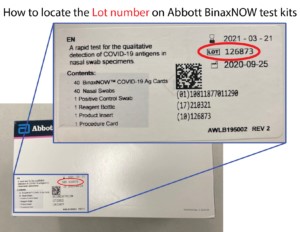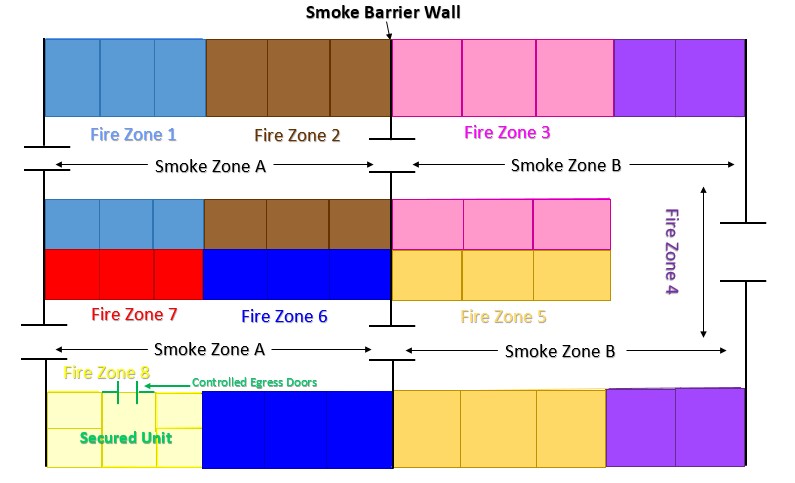LTC Bed Availability Portal
The healthcare continuum is again becoming strained with the number of positive cases across the state. This portal was originally established in November to improve communication across the care continuum to assist in ensuring Missourians have access to the right care in the right setting.
We are renewing our request for long-term care communities to complete a brief survey each day in order to identify available beds for potential admissions. Participation in the bed availability survey is voluntary. The survey may be accessed at https://arcg.is/1rjKy8.
The dashboard is being reset and all previous data is being deleted, so all communities will need to submit an initial survey – old update links will no longer work.
Reminder: After submitting the initial survey, a confirmation email will be provided for a link to update your survey each day (instead of submitting a new survey). Submitting a new survey results in multiple surveys showing on the map with different bed numbers. This makes it difficult to know which totals are current. Please use the link emailed after the initial submission to edit facility bed availability. Please do not submit an “initial” submission more than once. If information does not change from day to day, the submitter can simply update the date and submit – the prior day’s information will populate.
The survey information will populate an accompanying dashboard that will be available to hospitals to use as a tool in finding placement for those patients who would be best served in a long-term care setting. This dashboard may be accessed at https://mophep.maps.arcgis.com/apps/opsdashboard/index.html#/f1e0745f93fe46b482d8ff4585f821bf. To view instructions on utilizing the dashboard, click on ‘Instructions’ under the map for information.
Abbott BinaxNOW Testing Supplies
To order Abbott BinaxNOW from the state (one time shipments):
Missouri Long Term Care Facilities (RCF, ALF, ICF, and SNF), private Intermediate Care Facilities for Individuals with Intellectual Disabilities (ICF-IID), and Adult Day Care programs may order free Abbott BinaxNOW Testing Supplies from DHSS and SEMA via the following link: https://health.mo.gov/living/healthcondiseases/communicable/novel-coronavirus/testing-resources.php.Then scroll down under BinaxNOW Testing to the BinaxNOW hub and click on that link – then scroll to the icon for long-term care facilities and click on that icon. It takes you to a gray colored page that says to click ‘here’ to re-order; from that re-order form, click on Facility Type in the upper right hand corner and choose LTCF from the drop down box; then click on the your facility’s name in the drop down box entitled Facility Name.
The re-order form should then auto populate your contact information into the form and you simply tell us how many tests you need toward the bottom of that form, then click submit.
To reinstate direct shipments of Abbott BinaxNOW from the federal government:
Providers should email their facility information, shipping address and the BinaxNOW delivery Point of Contact for the facility and request to be added back onto the direct shipment list to Binax.Team@hhs.gov. Please be aware this can take up to 2 weeks to begin receiving shipments again.
DHSS guidance related to COVID-19 outbreaks, visitation, reporting, waivers, etc.- can be found on our website:
https://health.mo.gov/living/healthcondiseases/communicable/novel-coronavirus/professionals.php#collapseSix
COVID-19 Reporting Requirements
|
|
Reporting Process/Form
|
System
|
Purpose/Description
|
Required?
For Whom?
|
Time Frame
|
|
1
|
Electronic COVID-19 Case Reporting
|
REDCap: DHSS
|
Reporting form for all positive case results, including staff and residents. This includes Point of Care (POC) and PCR testing.
|
Yes, for all SNF, ICF, RCF, ALF, ICF-IID and Adult Day Care
|
Within 24 hours of positive result
|
|
2
|
Long Term Care Facility COVID-19 Outbreak Testing Data Reporting
|
REDCap: DHSS
|
Reporting portal for outbreak testing dates, number of residents and staff tested.
|
Yes, for all SNF, ICF, RCF, ALF, and ICF-IID.
|
Within 24 hours of testing
|
|
3
|
NHSN LTCF COVID-19 Module
|
Web Portal:
Managed by NHSN
|
NHSN-required fields solely for certified nursing homes (SNF/NFs).
|
Yes, for all certified SNF/NF. Voluntary for any state licensed only facility (RCF/ALF/Adult Day Care) or ICF-IID.
|
Weekly, with a preference for submission on the same day each week
|
|
4
|
NHSN Point of Care Laboratory Reporting Tool
|
Web Portal:
NHSN
|
POC test reporting that includes both positive and negative POC test results (even if potentially a false positive).
|
Yes, for any facility not reporting to DHSS in Row 5
|
Within 24 hours of result of POC test
|
|
5
|
Electronic COVID-19 Laboratory Reporting
|
Secure File Transfer/CSV file: DHSS
|
POC test reporting that includes both positive and negative POC test results (even if potentially a false positive).
|
Yes, for any facility not reporting to NHSN in Row 4
|
Within 24 hours of result of POC test
|
Archived Listserv messages can be found on our blog site: https://ltc.health.mo.gov/



